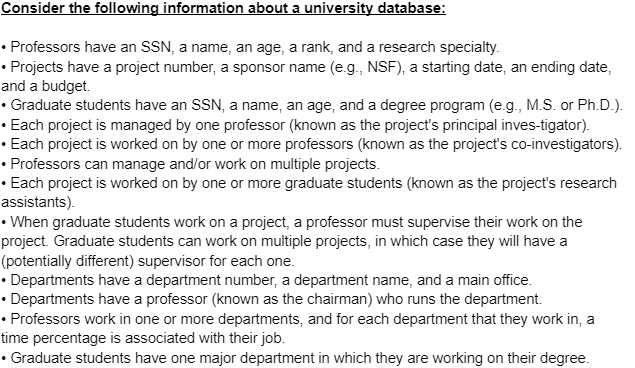Home /
Expert Answers /
Computer Science /
question-1-design-and-draw-an-er-diagram-that-captures-the-information-about-the-university-use-o-pa400
(Solved): Question 1: Design and draw an ER diagram that captures the information about the university. Use o ...
Question 1:
Design and draw an ER diagram that captures the information about the university. Use only the basic ER model here; that is, entities, relationships, and attributes. Be sure to indicate any key and participation constraints.
Question 2:
Map the UNIVERSITY database schema (from question 1) into a relational database schema.
Consider the following information about a university database: • Professors have an SSN, a name, an age, a rank, and a research specialty. • Projects have a project number, a sponsor name (e.g., NSF), a starting date, an ending date, and a budget. • Graduate students have an SSN, a name, an age, and a degree program (e.g., M.S. or Ph.D.). • Each project is managed by one professor (known as the project's principal inves-tigator). • Each project is worked on by one or more professors (known as the project's co-investigators). • Professors can manage and/or work on multiple projects. • Each project is worked on by one or more graduate students (known as the project's research assistants). • When graduate students work on a project, a professor must supervise their work on the project. Graduate students can work on multiple projects, in which case they will have a (potentially different) supervisor for each one. • Departments have a department number, a department name, and a main office. • Departments have a professor (known as the chairman) who runs the department. • Professors work in one or more departments, and for each department that they work in, a time percentage is associated with their job. • Graduate students have one major department in which they are working on their degree.
